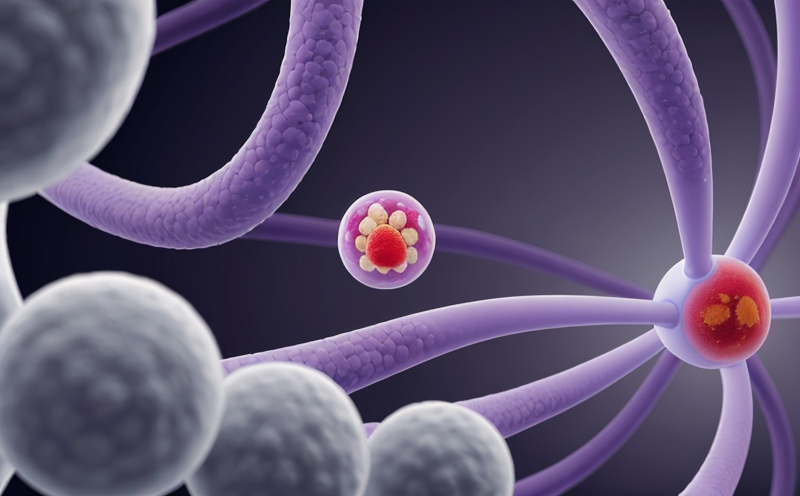PD-L1 Expression Testing in Preclinical Cancer Immunotherapy
The Programmed Death Ligand-1 (PD-L1) expression testing plays a critical role in preclinical cancer immunotherapy research and development. PD-L1 is an immune checkpoint protein expressed on the surface of tumor cells, which interacts with its receptor PD-1 to inhibit T-cell activation. Understanding the level of PD-L1 expression can provide insights into tumor immune evasion mechanisms and inform the design of novel immunotherapies.
PD-L1 testing in preclinical settings is essential for several reasons. It helps researchers identify potential biomarkers that could predict patient response to therapy, optimize treatment regimens, and evaluate new therapeutic agents. This testing can be performed using various techniques such as flow cytometry, immunohistochemistry (IHC), or next-generation sequencing (NGS). Each method has its advantages and limitations depending on the specific application.
For instance, IHC is widely used in clinical settings due to its ease of use and interpretability. However, it may not be as sensitive for detecting low levels of PD-L1 expression compared to NGS-based methods like RNA sequencing or whole-exome sequencing. Flow cytometry offers high throughput but requires specialized equipment and expertise.
The choice of methodology depends on factors such as the type of sample being analyzed (e.g., cell lines, primary tissues), the desired resolution, and budget constraints. Researchers must also consider validation requirements according to relevant standards like ISO 15189 for quality management systems in medical laboratories or ASTM E2580-16a for proficiency testing.
In preclinical studies, accurate PD-L1 expression levels are crucial not only for assessing therapeutic efficacy but also for understanding tumor microenvironment dynamics. By quantifying PD-L1 expression at different stages of tumor progression and across various types of cancers, scientists can develop more effective immunotherapies targeting specific subpopulations of cancer cells.
Moreover, this testing aids in stratifying patients into distinct groups based on their likelihood to benefit from certain treatments. This information is invaluable when designing clinical trials, ensuring that resources are allocated efficiently and ethically.
Why It Matters
PD-L1 expression testing in preclinical cancer immunotherapy matters because it offers valuable insights into how tumors evade the immune system. By measuring PD-L1 levels, researchers can better understand which patients might respond positively to checkpoint inhibitor therapies and tailor treatment strategies accordingly.
This knowledge also contributes significantly to advancing personalized medicine approaches by identifying biomarkers that correlate with therapeutic outcomes. Furthermore, accurate PD-L1 expression data enables more precise evaluation of new drug candidates, enhancing overall research efficiency and reducing development costs.
Benefits
- Enhances understanding of tumor immune evasion mechanisms.
- Predicts patient response to checkpoint inhibitor therapies.
- Optimizes treatment regimens for improved efficacy.
- Identifies biomarkers correlated with therapeutic outcomes.
- Aids in stratifying patients into distinct groups based on their likelihood of benefitting from certain treatments.
International Acceptance and Recognition
- The testing methodology aligns with international standards such as those specified in ISO 15189 for quality management systems in medical laboratories.
- PD-L1 expression levels are recognized by regulatory bodies like the FDA (Food and Drug Administration) and EMA (European Medicines Agency).





